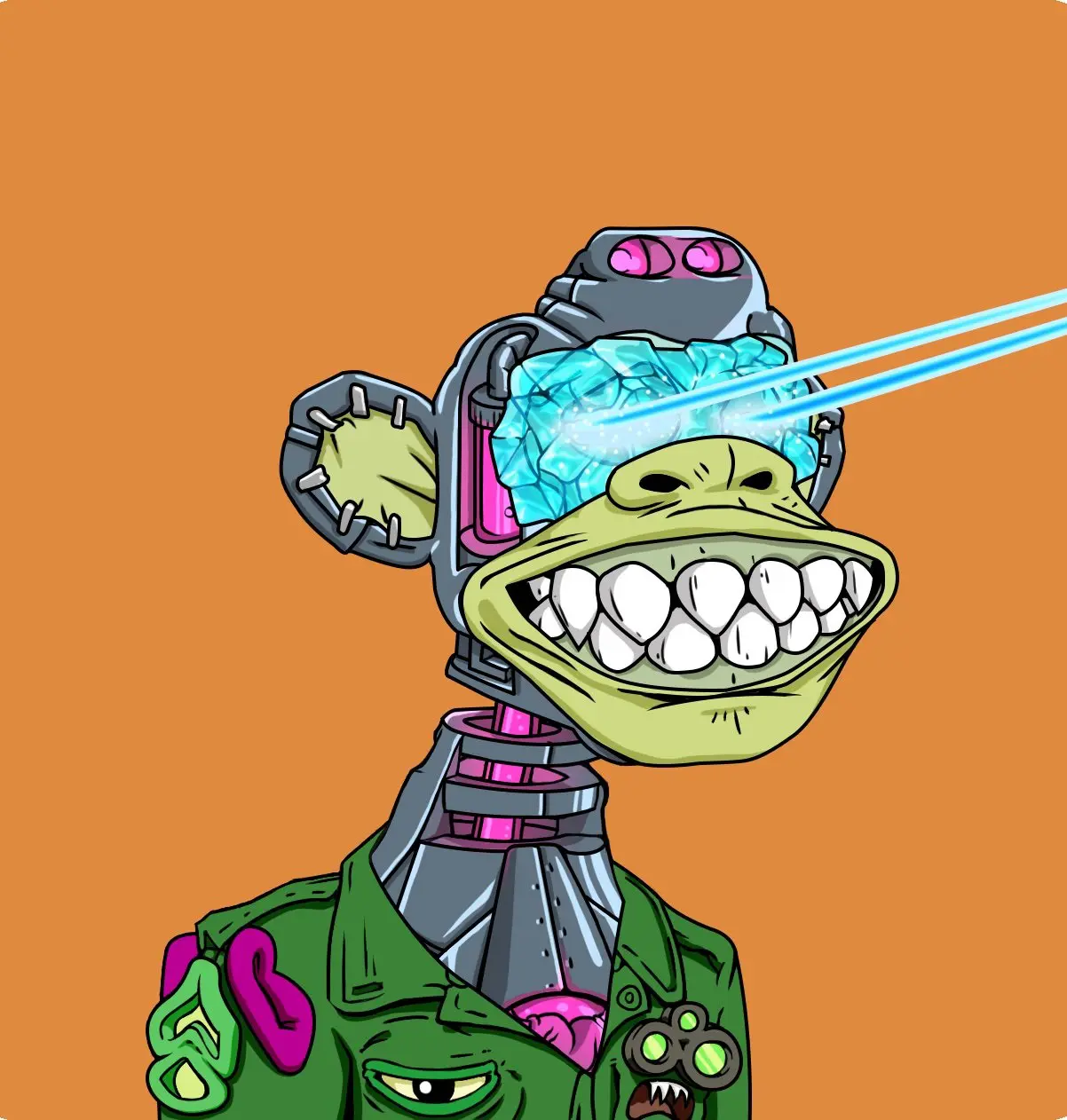By the time of writing this post, hardly anyone could have missed out on the hottest digital trend, NFTs. What started as a curiosity on some niche internet forum has now gained enough traction to find its way into articles in mainstream media [1]. Which is of course only to be expected when people are paying millions of USD [2] for something that could be described as nothing else than a JPEG of a cartoon ape.
Pieces of art selling for millions of dollars is not really unique per se [3] the thing that raises one’s eyebrow in the case of the BAYC [4] is that these are, to the uninitiated, nothing else than regular digital images that anyone could just download. Like the ape below for example, there is nothing stopping you from right clicking that image, saving it to your computer and then having it as your own profile picture on twitter.

So why would anyone pay $65 million for this JPEG? It is not even pretty to look at! To try to answer this question I would like us to look back into the history of art.
Because if there is one thing that art history can teach us, then that is that public opinion does not constitute a good way of distinguishing between art and non-art. Art history is full of examples of artists that created works of art that was considered weird, ugly, awful, preposterous, and everything other than what the general public would consider art, really. One could actually claim, and one would be mostly right, that the whole point of making art is to push the boundaries of what art is. To discover new horizons for what art could be. To be avant-garde. For the modern reader it might sound unbelievable but even the renaissance painters were once considered avant-garde. I guess the name renaissance-painter would provide somewhat of a hint in that direction, but generally, no one bats an eye when looking at their works. It is obvious to us that this is indeed art. Other famous examples of artists that was once considered outrageous and avant-garde is of course Édouard Manet with his Le Bain as well as his successor (with a confusingly similar name) Claude Monet.
From the above-mentioned artists however, the closer we get to today the blurrier the line gets. Picasso for example is well recognized as a great artist, however, I do not think that everyone appreciates his deeds. Same goes for Jackson Pollock where even more people might find the works too abstract to be really appreciated. And I would dare to say that modern performance art is lost on almost everyone but the most hard-core art lover.
When discussing NFTs and crypto art, however, I do want to linger a bit on performance art as I think that these topics share a lot of similarities. Performance art is, in contrast to more traditional art, something that is performed here and now and meant to be experienced in the here and now. What constitutes as performance could vary a lot, but the important thing is that it is an ephemeral piece. When it originally gained traction, in the beginning of the 1900s it was done as a backlash to the materialistic ideal that the artists saw in society. A performance work is by its very definition ephemeral. It does not produce an artifact that could be sold to the highest bidder and the control of the work was completely in the hands of the artist.
In summary, performance art is an anti-materialistic backlash to the then current hegemony in the art world, where the performance works are ephemeral. And most important, performance art is absolutely considered art. At least by scholars.
I am not implying that NFTs would be a form of performance art. That would be to rob it of its own merits. However, I am saying that the crypto art movement is avant-garde. It is a backlash against something that was before. The obvious question would of course then be, a backlash to what? Unfortunately, your guess is as good as mine, but I will nonetheless make one. Interestingly enough, I think that crypto art is also anti capitalistic, much like performance art. If this sounds a bit ironic to you, I can assure you that is absolutely one hundred percent part of the point. Instead of distancing oneself from capitalism by being anti consumeristic, crypto art is going in the opposite direction. It is about embracing corporate capitalism and to, in an almost nihilistic degree, take on the global elite and beat them at their own game by not caring about the rules. NFTs are not about the JPEGs. And not about the blockchain for that matter either. Those are just components in the latest avant-garde art movement. Shall we call it cryptoism?
